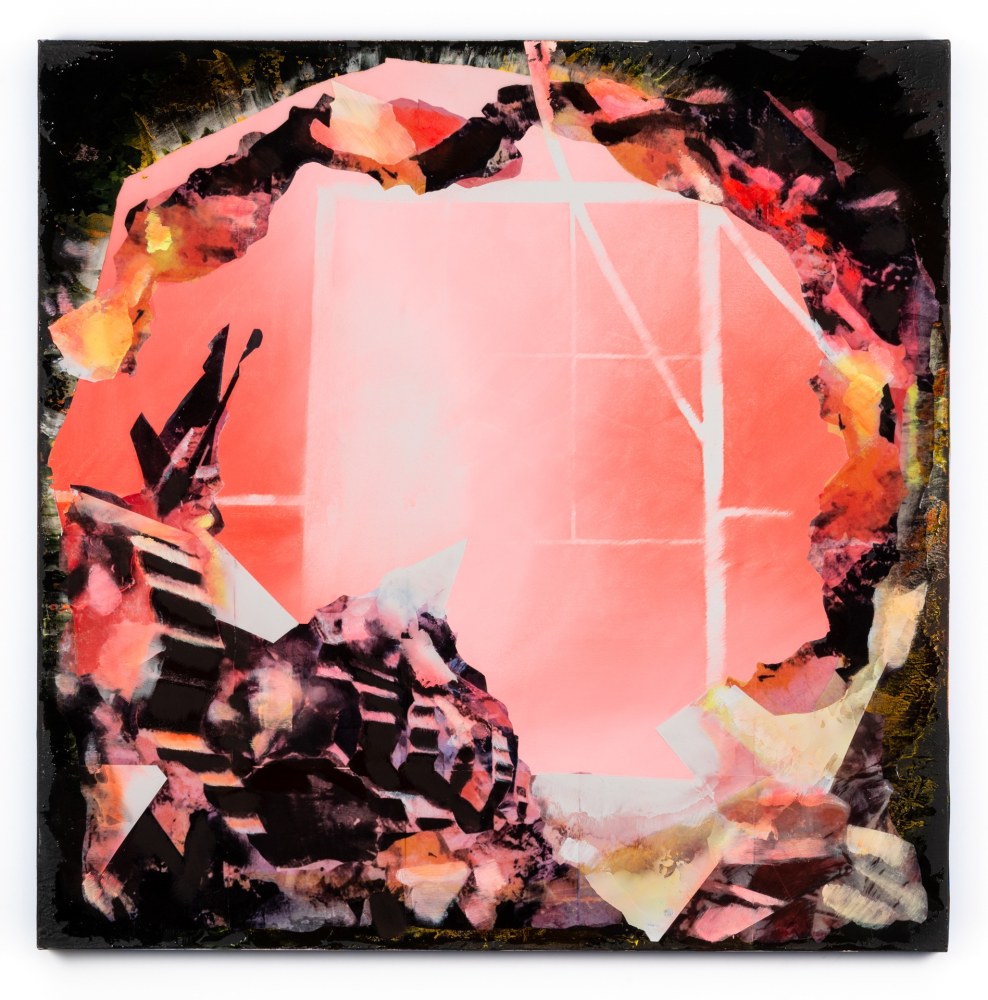
Visions of Urgent Abstraction
Dexter Wimberly, Hyperallergic
When first entering the gallery of Rushern Baker IV’s show, Post-World at Hemphill Fine Arts, I was immediately struck by a sense of urgency and violence. In his kinetic abstract paintings, Baker utilizes myriad repetitive motifs that include the omni-present predator drone, crumbling Greco-Roman columns, and collapsing structures that look ominously similar to the World Trade Center buildings. In Baker’s most recent painting, “Fire Man” (2019) direct inspiration is drawn from comic book and propaganda imagery, as well as cannibalized images of past work that form the building blocks of the painted surface. These references blur the line between the real and the digital, the concrete and the ephemeral, creating a new hybridity that attempts to describe the indescribable. Baker states “that if these paintings can engage with the world today, it is through the complex feeling of vulnerability happening everywhere, every minute.”
Baker also draws multiple links to the history of Black abstraction; he employs Sam Gilliam’s “stain,” the architecturally influenced geometric compositions of Felrath Hines, and the tactility and built surfaces of Jack Whitten. But where these artists stopped short of direct visual reference to narrative, championing the implied, Baker is unapologetically descriptive, creating what he refers to as a “more objective form of abstraction.”
Baker’s visions are also drawn from the everyday world, the urban and suburban environment upended through steady degradation: bricks, plaster, metal, and cement form the landscape, as the built environment dissolves within its composition. The sense of energetic anxiety permeates the surface of his paintings. In addition to societal unrest, Baker is heavily influenced by author Octavia Butler’s Afrofuturist novels, most notably Parable of the Sower. Set in the near future, the prescient book tells the story of a world slowly spiraling out of control due to unregulated capitalism, environmental degradation, and the breakdown of the US political system. Baker sees similarities between himself and Parable of the Sower’s main protagonist, who is plagued by a “hyper empathy” disease, and fears mankind’s future. It is both empathy and fear that permeate the “mind-space” of Baker’s studio; He explains that “as a Black man in a world filled with numerous threats of institutionalized violence, such as police brutality,” he attempts to use free-floating abstraction to express what he sees as ongoing dangers.
These threats, Baker argues, are realized by fears of environmental destruction through violent indifference, racial animus that haunts the future, alternative facts, weaponized technology, and unbridled income inequality. Baker is candid with his discomfort with these themes, but is simultaneously unable to detach himself from them.
Born in Washington, D.C. and raised in its suburbs, 31-year old artist Rushern Baker IV comes from a politically involved family, participating in numerous political campaigns throughout his life, most recently as the Campaign Chair for his father’s run for Maryland governor. He’s since returned to the studio after the brief hiatus in the political arena left him with a renewed interest in political theater and the socio-economic ramifications of domestic and foreign policy. Living in the shadow of our nation’s capital, perhaps it is natural for Baker to be tuned into the pregnant crisis of post-modernity: are we on the verge of utopia or apocalypse?